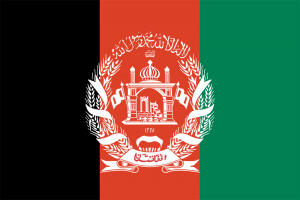Language/Central-pashto/Grammar/Gender
Hi Central Pashto learners! 😊
In this lesson, we will learn about gender in Central Pashto language.
Introduction[edit | edit source]
Like many other languages, Central Pashto uses gender to classify nouns. It is important to understand the gender of a noun to correctly use determiners, adjectives, and verbs in a sentence. In Central Pashto, there are two genders: masculine and feminine. It is important to note that gender in Central Pashto is not determined by natural gender (male or female) but instead determined by the ending of a noun.
Take some time to dive into these other pages after completing this lesson: Negation & Adjectives.
Gender endings[edit | edit source]
In Central Pashto, masculine nouns usually end with consonants, while feminine nouns end with the vowel "-a". However, it's not always the case, here are some guidelines to help you determine the gender of a noun:
- Feminine endings:
* -a (ex. کور-, house) * -ma (ex. نیکمهْرما, teacher(feminine)) * -na (ex. شُپينَ, shepherdess)
- Masculine endings:
* -ه (-h), (ex. کتاپ, book) * -ونه (-wana), (ex. کورونه, houses) * -غ (-gh), (ex. جِرغَ, wolf)
There are also nouns that have the same form in both genders. In these cases, the use of a gendered adjective or a determiner can clarify which gender the noun is referring to.
Here are some examples in table form:
| Central Pashto | Pronunciation | Gender | English |
|---|---|---|---|
| کور- | koor | Feminine | house (Feminine) |
| نیکمهْرما | neekmehrama | Feminine | teacher(feminine) |
| شُپينَ | shupina | Feminine | shepherdess |
| کتاپ | kitab | Masculine | book |
| کورونه | korwana | Masculine | houses |
| جِرغَ | jergha | Masculine | wolf |
Gender agreement[edit | edit source]
Understanding gender is important for the correct use of adjectives and verbs. In Central Pashto, adjectives and verbs agree with the gender of the noun they describe or refer to. This means that if the noun is feminine, the adjective or verb used to describe it should also be in the feminine form, and vice versa. Let's take a look at some examples in table form:
| Central Pashto | Pronunciation | English |
|---|---|---|
| زه د نیکمهْرمه پاتې دي | zah da neekmehrama paate de | I am a female teacher. |
| زه په مدرسه کتابونې خوړم | zah pa madarase kitabwani khawram | I study in the school. |
Gender and culture[edit | edit source]
Gender plays an important role in Central Pashtun culture, especially when it comes to naming conventions. Pashtuns often choose names that reflect the gender of their child, and sometimes even use gender-neutral names that can be used for both boys and girls. For example, the name "Aziz" (عزيز) is a common name for boys and girls, while the name "Zarghuna" (زرغونه) is a feminine name that means "golden color".
Practice[edit | edit source]
To practice what you have learned in this lesson, try to classify the following nouns as masculine or feminine:
- ستر
- باته
- ماڼه
- قوتله
- شاعر
You can also try to make simple sentences using feminine and masculine nouns, adjectives and verbs.
Conclusion[edit | edit source]
In this lesson, we have learned about gender in Central Pashto. Understanding the gender of a noun is important to use determiners, adjectives, and verbs correctly. Remember to practice what you have learned by making simple sentences and classifying nouns as masculine or feminine.
➡ If you have any questions, please ask them in the comments section below.
➡ Feel free to edit this wiki page if you think it can be improved. 😎
Sources[edit | edit source]
Impressive work on finishing this lesson! Explore these additional pages to enhance your understanding: Past Continuous & Conditional Mood.
Other Lessons[edit | edit source]
- Plurals
- Personal pronouns
- Questions
- Negation
- Nouns
- Pronouns
- Adjectives
- Give your Opinion
- Conditional Mood

